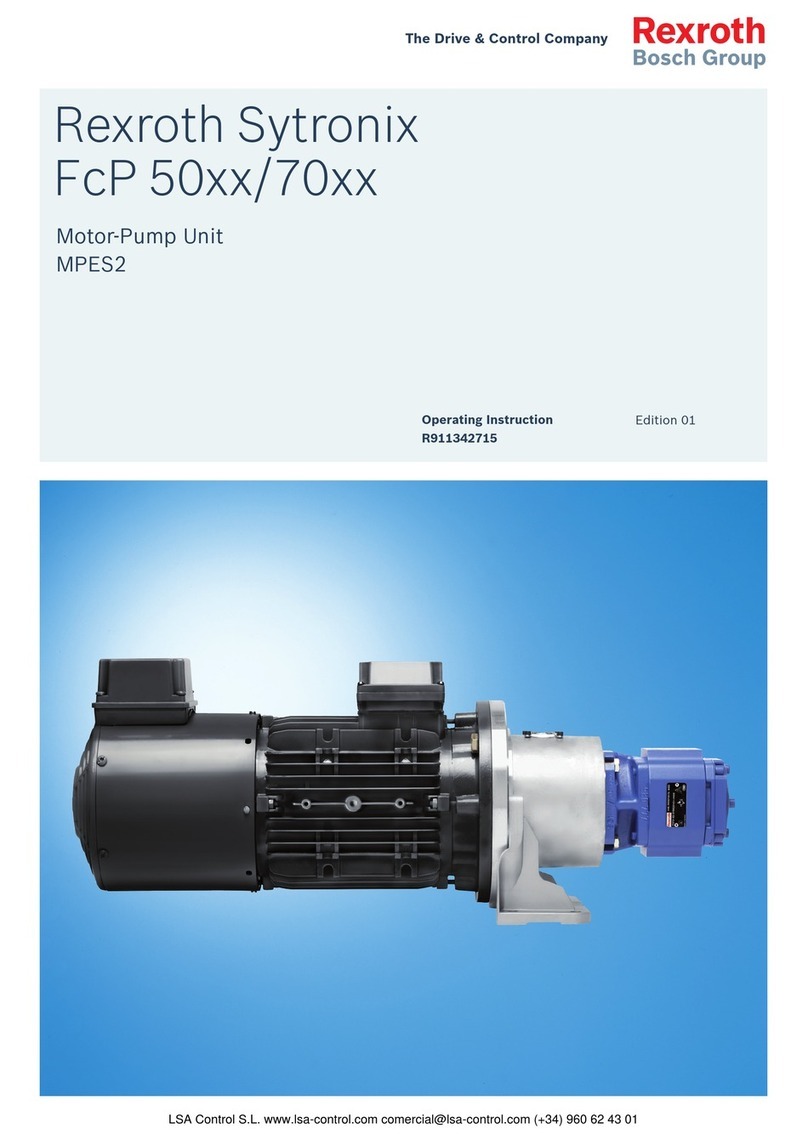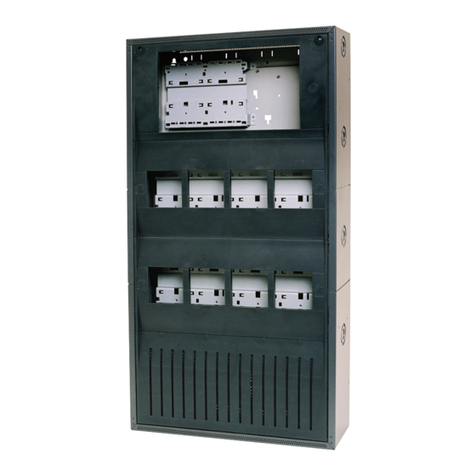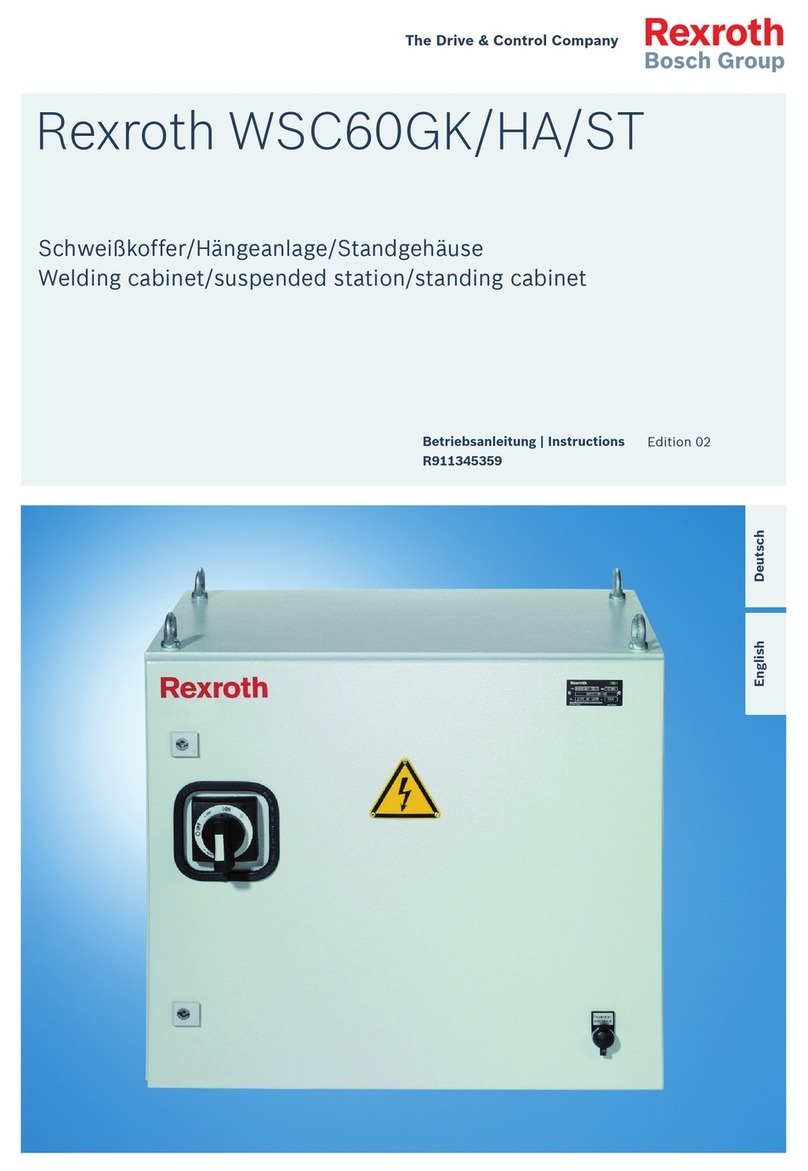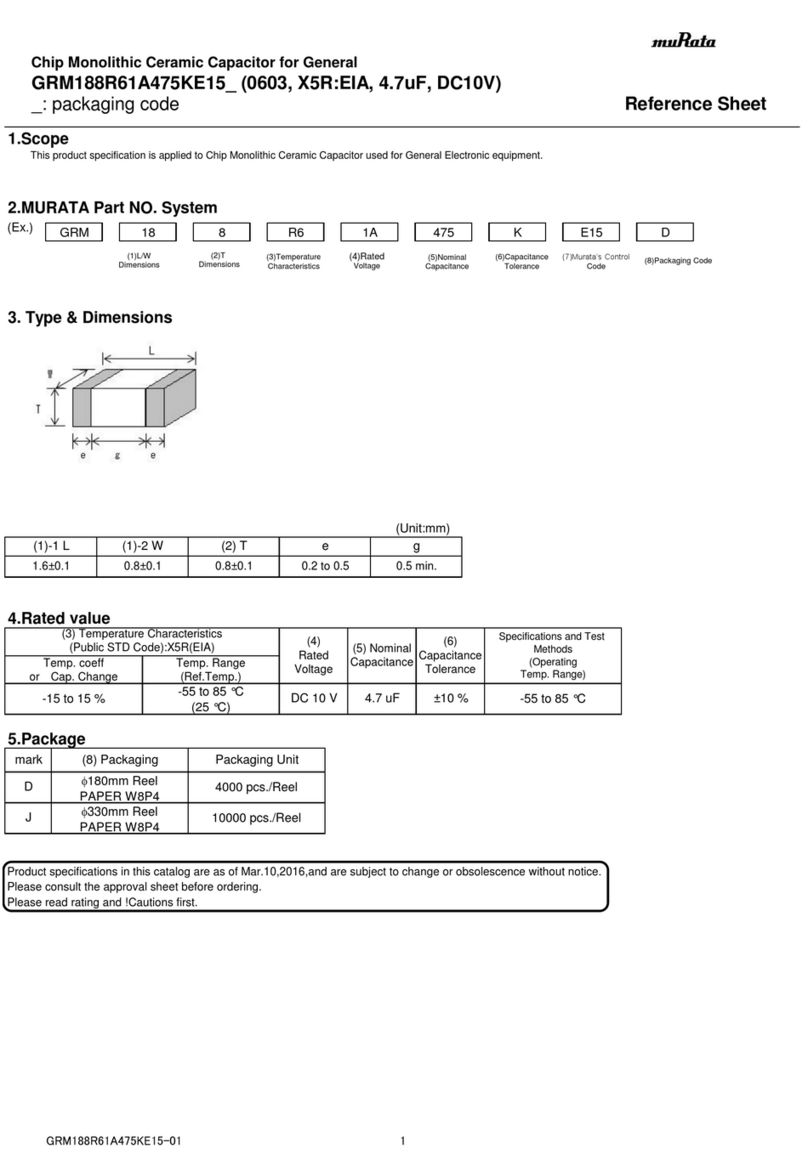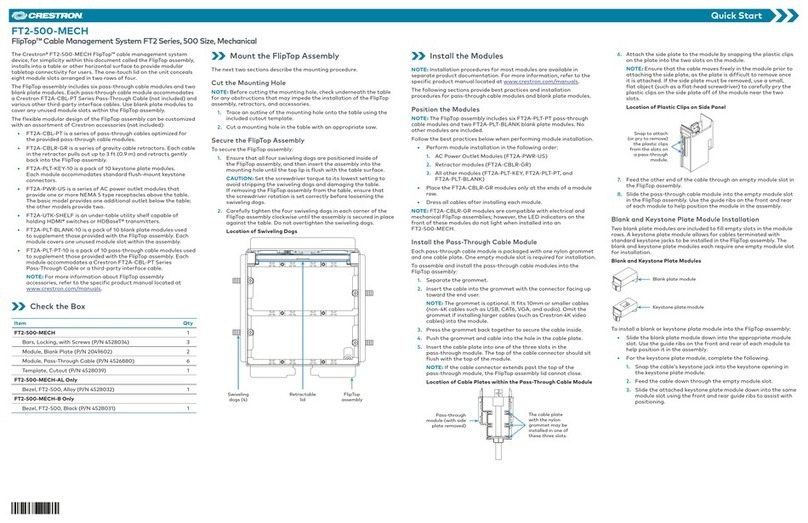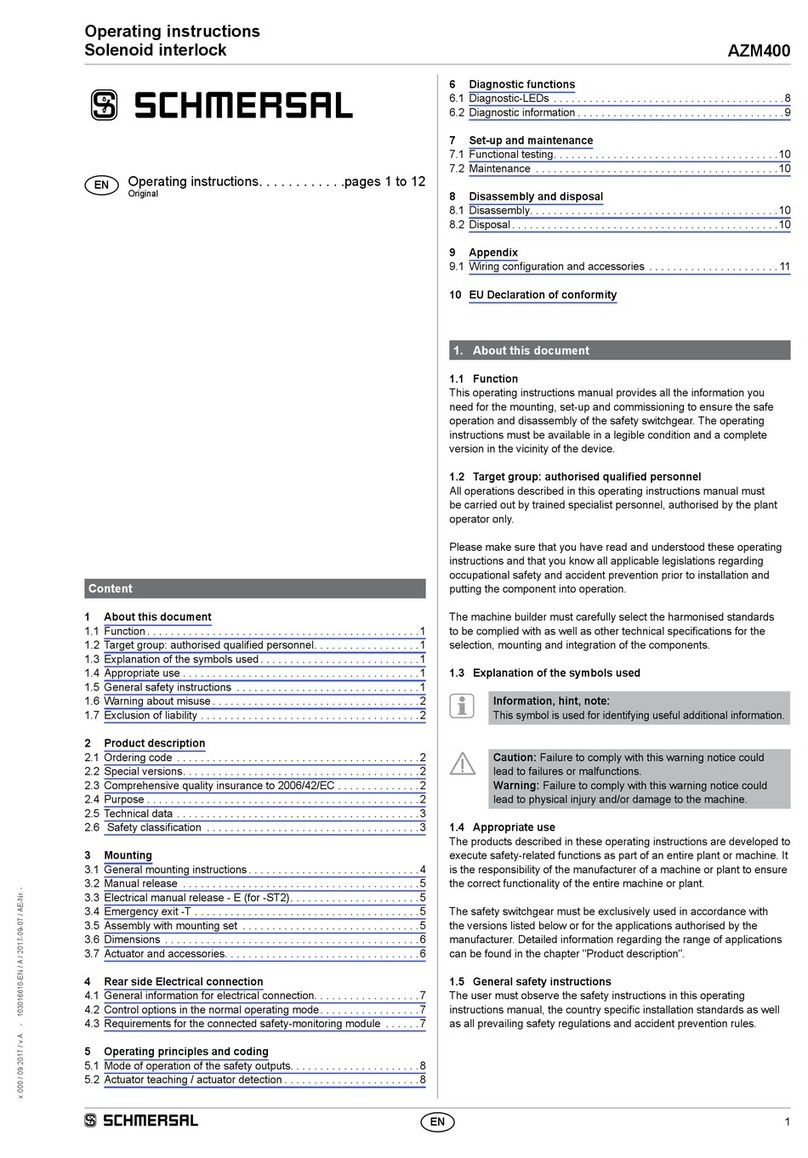Bosch PRAESENSA User manual

Loudspeaker line isolator system
PRAESENSA
en Installation manual


Loudspeaker line isolator system Table of contents | en 3
Bosch Security Systems B.V. Installation manual 2021.07.28 | V1.00 |
Table of contents
1Important product information 4
1.1 Safety 4
1.2 Disposal instructions 4
2About this manual 5
2.1 Intended audience 5
2.2 Trademarks 5
2.3 Notice of liability 5
2.4 Document history 5
3System introduction 6
3.1 Product overview 6
3.2 Main functionality 7
3.3 PRA-LID (LDB) Indicators, buttons and connections 9
3.4 PRA-LIM (FIM) Indicators, buttons and connections 11
4Installation 13
4.1 Fault contact 13
4.2 Wiring 13
4.3 Wiring configurations 13
4.4 Installing PRA-LID (LDB) with PRAESENSA 14
4.4.1 Physical installation 15
4.4.2 End Of Line (EOL) monitoring 15
4.4.3 Powering of the PRA-LID (LDB) 15
4.4.4 PRA-LID (LDB) | Enable Amplifier Detection setting 15
4.5 Installing order PRA-LID (LDB) 15
4.6 Installing PRA-LIM (FIM) on a loudspeaker line 16
5Examples of loudspeaker line isolator system installations 20
6Troubleshooting 22
6.1 PRA-LID (LDB) 22
6.1.1 SHORT fault 22
6.1.2 OPEN fault 24
6.1.3 EARTH fault 25
6.1.4 Wrong cable polarity – double twist 25
6.2 PRA-LIM (FIM) 26
6.2.1 Short loop 27
6.2.2 Short on T-Branch 28
6.2.3 Open T-Branch 29
7Routine maintenance inspection 30
8Technical data 31
8.1 PRA-LID (LDB) 31
8.2 PRA-LIM (FIM) 33
8.3 Approvals 35

4en | Important product information Loudspeaker line isolator system
2021.07.28 | V1.00 | Installation manual Bosch Security Systems B.V.
1 Important product information
1.1 Safety
i
Notice!
System installation and servicing by qualified personnel only, in accordance with applicable
local codes. No user‑serviceable parts inside.
1.2 Disposal instructions
Old electrical and electronic appliances.
Electrical or electronic devices that are no longer serviceable must be collected
separately and sent for environmentally compatible recycling (in accordance with the
European Waste Electrical and Electronic Equipment Directive).
To dispose of old electrical or electronic devices, you should use the return and
collection systems put in place in the country concerned.

Loudspeaker line isolator system About this manual | en 5
Bosch Security Systems B.V. Installation manual 2021.07.28 | V1.00 |
2 About this manual
This document will describe the solution, possible configurations, installation steps and
specific information needed to ensure an EN54‑16 compliant installation of PRAESENSA and
the loudspeaker line isolator system.
– This manual, or an update, in pdf format is available as download
www.boschsecurity.com.
2.1 Intended audience
This installation manual is intended for everyone who is authorized to install the loudspeaker
line isolator system, and related products.
2.2 Trademarks
Throughout this document trademark names may have been used. Rather than put a
trademark symbol in every occurrence of a trademark name, Bosch Security Systems states
that the names are used only in an editorial fashion and to the benefit of the trademark owner
with no intention of infringement of the trademark.
2.3 Notice of liability
While every effort has been taken to ensure the accuracy of this document, neither Bosch
Security Systems nor any of its official representatives shall have any liability to any person or
entity with respect to any liability, loss or damage caused or alleged to be caused directly or
indirectly by the information contained in this document.
Bosch Security Systems reserves the right to make changes to features and specifications at
any time without prior notification in the interest of ongoing product development and
improvement.
2.4 Document history
Release date Documentation version Reason
2021.07.28 V1.00 1st edition

6en | System introduction Loudspeaker line isolator system
2021.07.28 | V1.00 | Installation manual Bosch Security Systems B.V.
3 System introduction
The loudspeaker line isolator system for surveillance of loudspeaker lines in combination with
PRAESENSA Public Address and Voice Alarm system. The main task of the loudspeaker line
isolator system is to keep the audio message broadcast in the emergency zone in case of a
loudspeaker line short‑circuit. This is done by means of, isolating damaged cable section away
from the healthy part of the cable.
The loudspeaker line isolator system covers completely the functionality of Voice Alarm
System in the area of loudspeaker line fault detection, according to EN54‑16 product
standard. The loudspeaker line isolator is capable of detecting and indicating not only
short‑circuit on the line, but also open line, disconnection of a loudspeaker and earth‑leakage
at any point of the loudspeaker line.
The loudspeaker line isolator system provides monitoring of loudspeaker lines and single
loudspeakers. In case of fatal failure on the loudspeaker line, the loudspeaker line isolator
reacts immediately and keeps seamless audio transmission.
Transparent to keep the full band audio quality unaffected up to 800W constant AC‑power on
a single 1000‑meter loop.
3.1 Product overview
The Line isolator system comprises of two types of devices which play different roles in the
system:
LDB (LoopDrive Booster), with ordering number PRA-LID - is the central unit installed in the
Voice Alarm System rack, directly between the amplifier and loudspeaker line. Mounted on a
DIN‑rail LDB works as the DC‑power supply for FIMs and can also generate special service
commands to FIMs.
LDB is responsible for monitoring and reporting faults globally (per loudspeaker loop):
– Loop short (entire loop)
– Loop open (entire loop)
– T-branch short (any T‑branch)
– T-branch open (any T‑branch)
– Earth leakage (amplifier input, entire loop, any T‑branch)

Loudspeaker line isolator system System introduction | en 7
Bosch Security Systems B.V. Installation manual 2021.07.28 | V1.00 |
FIM (Fault Isolator Module) with ordering number PRA-LIM - installed in the field, on the
loudspeaker line. FIM functions as the isolator in case of a short-circuit. Responsible for
monitoring and reporting faults locally (for local line segments connected to the FIM):
– Loop short (only adjacent segments)
– T‑branch short
– T‑branch open
3.2 Main functionality
Architecture of the loudspeaker line isolator system allows you to create loudspeaker line in
closed‑loop topology with extra side‑spurs, called T‑Branches. The loop as well as every single
T‑Branch are constantly monitored and searched for any abnormalities in the load and cabling.
Figure3.1: Loudspeaker loop monitored by the loudspeaker line isolator
The loudspeaker line isolator system catches multiple faults independently for different
loudspeaker lines. It handles also multiple faults at the same time for the same loudspeaker
line, regardless the type of the fault.

8en | System introduction Loudspeaker line isolator system
2021.07.28 | V1.00 | Installation manual Bosch Security Systems B.V.
Following types of faults are detected:
– Every short‑circuit on loudspeaker line immediately after it’s occurrence with audio
recovery within 4 seconds,
– open-loop fault on the main loop,
– open of the T‑Branch (with EOL resistor enabled),
– earth leakage on the main loop,
– earth leakage of the T‑Branch (with EOL resistor enabled).
i
Notice!
For the purpose of line monitoring the loudspeaker line isolator system generates DC‑voltage
on the entire loudspeaker line (including T‑Branches), therefore each loudspeaker on the line
has to be equipped in series with DC‑blocking capacitor. Loudspeakers without a capacitor
will be seen as a short‑circuit on the loudspeaker line.
Figure3.2: Typical loudspeaker line isolator duty cycle

Loudspeaker line isolator system System introduction | en 9
Bosch Security Systems B.V. Installation manual 2021.07.28 | V1.00 |
3.3 PRA-LID (LDB) Indicators, buttons and connections
Front Top Bottom Side
FAULT OUTPUT CONTACT
RS485 B
RS485 A
GND
+24/48 VDC
1 MODE/EARTH indicator 6 ID rotary switch
2 OPEN indicator 7 LOOP PRIMARY output connector
3 SHORT indicator 8 LOOP SECONDARY output connector
4 SERVICE button 9 Power amplifier connector
5 RESET button 10 Loopdrive bus DIN rail connector
Indicators
Line isolator feature multi‑color LED indicators with different color and blinking cycles, which
correspond to currently detected state of the loudspeaker line.
General principle of LED indications:
– BLUE - system OK.
– ORANGE - fault detected.
Fault detection is always indicated by cyclic blinking. Blinking speed relates to the current
status of the fault:
– ORANGE fast (4 cycles/sec) - fault is currently detected.
– ORANGE slow (1 cycle/sec) - fault was detected in the past and fixed.

10 en | System introduction Loudspeaker line isolator system
2021.07.28 | V1.00 | Installation manual Bosch Security Systems B.V.
Indication Corresponding status
MODE indicator
BLUE continuous Quiescent mode, system OK
BLUE fast Service mode
BLUE slow System rebooting
WHITE fast Factory reset (started)
WHITE slow Factory reset (done)
EARTH indicator
ORANGE fast Earth fault (active)
ORANGE slow Earth fault (memory)
OPEN indicator
ORANGE fast Loop open (active)
ORANGE slow Loop open (memory)
SHORT indicator
ORANGE fast Loop short (active)
ORANGE slow Loop short (memory)
Blinking speed: Fault status:
Fast 4 blinks/s active fault is currently detected
Slow 1 blink/s memory fault was detected in the past and
fixed
Very slow 1 blink/4s

Loudspeaker line isolator system System introduction | en 11
Bosch Security Systems B.V. Installation manual 2021.07.28 | V1.00 |
3.4 PRA-LIM (FIM) Indicators, buttons and connections
1Indicator A 3 Indicator B
2 LOOP connector A 4 LOOP connector B
5 RESET button 6 EOL monitoring switch for T‑Branch
7 External LED connector
(external fault indicator)
8 T‑Branch connector
Indicators
Line isolator feature multi‑color LED indicators with different color and blinking cycles, which
correspond to currently detected state of the loudspeaker line.
!
Caution!
FIM is not capable of indicating EARTH faults and LOOP OPEN faults.
Indication Corresponding status
A B
BLUE very slow Quiescent mode, system OK
BLUE fast Service mode
BLUE slow Charging
ORANGE fast off LOOP SHORT side A (active)
ORANGE slow off LOOP SHORT side A (memory)
off ORANGE fast LOOP SHORT side B (active)
off ORANGE slow LOOP SHORT side B (memory)

12 en | System introduction Loudspeaker line isolator system
2021.07.28 | V1.00 | Installation manual Bosch Security Systems B.V.
Indication Corresponding status
A A/B interaction B
ORANGE fast simultaneous ORANGE slow LOOP SHORT side A (active)
LOOP SHORT side B (memory)
ORANGE slow simultaneous ORANGE fast LOOP SHORT side A (memory)
LOOP SHORT side B (active)
ORANGE fast alternating ORANGE fast T-Branch SHORT (active)
ORANGE fast alternating interrupted ORANGE fast T-Branch OPEN (active)
ORANGE slow alternating ORANGE slow T-branch SHORT or OPEN (memory)
Blinking speed: Fault status:
Fast 4 blinks/s active fault is currently detected
Slow 1 blink/s memory fault was detected in the past and
fixed
Very slow 1 blink/4s

Loudspeaker line isolator system Installation | en 13
Bosch Security Systems B.V. Installation manual 2021.07.28 | V1.00 |
4 Installation
The loudspeaker line isolator system can be installed on both new and existing loudspeaker
line installations.
Several conditions need to be met first to make all features work properly:
– Main loudspeaker line has to be a closed loop.
– T‑branch lines fitted with multiple loudspeakers require 47kΩ EOL resistor for T‑Branch
open detection.
– Every loudspeaker connected to Line isolator needs to be equipped with DC‑blocking
capacitor (typical value is 1 ~ 4.7μF).
– For 100V installations maximum total load of single loop is 800W, maximum single
T‑Branch load 50W.
– 24 or 48VDC power supply for LDB.
4.1 Fault contact
Line isolator provides fault contact output per loudspeaker line for integration with any Voice
Alarm System via programmable control inputs. Every loudspeaker line can have separate
contact closure, or - depending on the system design - multiple loudspeaker lines can share
common fault contact.
The contact is normally open during quiescent mode of the system. During quiescent mode:
– Line isolator system is powered and running, monitoring entire loudspeaker line.
– Power amplifier is connected.
– Loop is closed and fully working, every T‑Branch is fully operational.
– No faults detected.
Any other state, including service mode, amplifier disconnection or even power failure of Line
isolator, will immediately close the contact, reporting failure to the main system.
4.2 Wiring
The loudspeaker line isolator system can connect to solid-core wires or stranded wires with
conductor diameter of 0.8 - 2.5mm2. The maximum current rating of the loudspeaker loop is
8A RMS, which allows loading single 100V line up to 800W.
Fully functional when running on 2‑wire loudspeaker cable. For installations with special safety
requirements, its supports optional ground wire with open detection.
Maximum length of loop cabling is 1000m. Maximum length of T‑Branch line is also 1000m.
4.3 Wiring configurations
Figure4.1: Single LDB wiring diagram

14 en | Installation Loudspeaker line isolator system
2021.07.28 | V1.00 | Installation manual Bosch Security Systems B.V.
Figure4.2: Multiple LDB wiring. Left: individual amplifier channels. Right: shared amplifier
Figure4.3: Multiple LDB wiring. Left: individual fault contact inputs. Right: common fault contact
Figure4.4: Complete loudspeaker line isolator system installation diagram
4.4 Installing PRA-LID (LDB) with PRAESENSA
This section will describe the installation and configuration of the Line Isolator Drive in
combination with PRAESENSA to ensure an EN54‑16 compliant installation.
We strongly recommend to first install and connect LDB to PRAESENSA and the loudspeaker
line. Having loudspeaker line connected to LDB gives you the DC‑power on the line, which is
necessary for correct start‑up of FIM. Skipping LDB during fresh system installation may result
in wrong FIM connections and unnoticed cable faults, which will cost you precious time during
system commissioning.

Loudspeaker line isolator system Installation | en 15
Bosch Security Systems B.V. Installation manual 2021.07.28 | V1.00 |
4.4.1 Physical installation
Certification of the PRAESENSA system and Line Isolator Drive (PRA-LID) includes the
cabinets (i.e. the enclosed 19"‑racks) in which the system elements are mounted. It is allowed
to use one or more cabinets, depending on the size of the system. Within the same cabinet
family, different heights are allowed up to a maximum height that depends on the brand and
type of an approved cabinet. The following cabinets have been approved for use:
– Rital: TS, TS‑IT, CX25 series
– Schroff: 20130073 PRAESIDEO
– E.LAN: Diamond series
– Knurr (Emerson): Miracel series
4.4.2 End Of Line (EOL) monitoring
The PRAESENSA End Of Line (EOL) monitoring function cannot be used in combination with
Line Isolator Drive (PRA-LID). This means that for those loudspeaker output lines, where a
Line Isolator Drive (PRA-LID) is connected, this function needs to be disabled in PRAESENSA.
The EOL monitoring function will be taken over by the loudspeaker line isolator system and
reported via the PRA-LID to the PRAESENSA system.
In this case, the EOL reporting will be done via contact closers. Depending on the chosen
configuration, one or multiple PRA-LID contact closers will be connected to an contact input
on the PRAESENSA system. The input contact will be configured accordingly in the
PRAESENSA system.
4.4.3 Powering of the PRA-LID (LDB)
The PRA-LID (LDB) needs to be powered from the PRAESENSA Multifunction power supply,
large (PRA-MPS3). This to ensure a redundant and certified power source solution according
EN54. One of the three 48V outputs of the PRA-MPS3 device will be used for connecting only
PRA-LID (LDB) reaching from one PRA-LID (LDB) to a maximum of 16.
i
Notice!
The number of PRA-LID (LDB) you can connect to the PRA-MPS3 ranging from 1 to 16, is
depending on the configuration. The PRAESENSA power calculator can be used to determine
the exact number.
4.4.4 PRA-LID (LDB) | Enable Amplifier Detection setting
The Enable Amplifier Detection option in the PRA-LID (LDB) is not working in combination
with PRAESENSA. Therefore, make sure that this setting is disabled. This can be done via the
Sniffer tool (see LDB Sniffer User guide for more details).
4.5 Installing order PRA-LID (LDB)
1. Fix LDB on a DIN‑rail, and connect 24/48VDC power supply to power terminals on 5‑pin
rail connector.
– LDB should boot‑up, indicating boot progress with blue blinking on MODE indicator.
2. Within 15 seconds LDB will indicate OPEN fault, since AMP input as well as both LOOP
outputs are not connected.
3. Connect output of power amplifier to the AMP input of LDB.
– LDB is not sensitive for amplifier output polarity, however it is recommended to keep
the correct polarity to maintain best acoustic coherence of audio signal.
4. Connect the outgoing loop cable to PRIMARY output of LDB.

16 en | Installation Loudspeaker line isolator system
2021.07.28 | V1.00 | Installation manual Bosch Security Systems B.V.
i
Notice!
If any short circuit is present on the speaker cable, LDB will immediately detect and isolate
the shorted connector and SHORT indication will appear on LDB front panel. If the speaker
cable connects to ground causing earth leakage, LDB will detect the earth leakage and EARTH
fault indication will appear on LDB front panel. See
PRA-LID (LDB) Indicators, buttons and
connections, page 9
.
5. If system includes multiple loops (multiple LDBs), there is a number of ways you can
interconnect Loudspeaker line isolator to the Public Address / Voice Alarm system.
6. If you are planning to proceed with installation of FIM modules on the loop, leave the
SECONDARY output of LDB disconnected.
7. When loop is closed, and all FIMs on the loop are working properly, connect the incoming
loop cable to SECONDARY output of LDB. Loop is now fully secured.
Multiple LDBs can share common fault contact or individual fault control contacts of the main
system. Fault contact sharing allows you to reduce number of control inputs needed for fault
reports. Detailed information about the location and type of fault is always available on LDBs
front panels, as well as via Sniffer PC application.
Multiple LDBs can also share common power amplifier or have individual power amplifiers
from the main system. Amplifier sharing allows you to create multiple loops within one zone,
each with individual surveillance.
Refer to
– PRA-LID (LDB) Indicators, buttons and connections, page 9
4.6 Installing PRA-LIM (FIM) on a loudspeaker line
Before you start connecting FIMs on the loop, make sure that LDB is connected to the rail and
powered. See
Installing order PRA-LID (LDB), page 15
.
1. For most efficient installation make sure that LDB is in SERVICE MODE (blue MODE
indicator blinking fast).
– To put LDB into SERVICE MODE press SERVICE button for 10 seconds or use Sniffer
PC application.
2. During SERVICE MODE LDB will show OPEN fault indication as long as the loop is not
completely closed.
– This is the correct indication, since the loop should be closed only at the final stage
of installation, to make sure that the entire course of the loop is complete.
i
Notice!
When the loudspeaker line isolator system is in SERVICE MODE, audio signal from power
amplifier is not transmitted to the loop.
3. Double check if the loudspeaker line cable is connected to the PRIMARY loop output of
LDB and the SECONDARY loop output of LDB is not connected.
4. LDB should indicate only OPEN fault. If SHORT fault is detected, fix it before FIM
installation.
5. Check if EOL switch (6) on the FIM is in OFF position.
i
Notice!
EOL switch (6) should be in ON position only with EOL resistor connected to the termination
of T‑Branch line. Short circuits on T‑Branch are detected and isolated regardless the EOL
monitoring switch.

Loudspeaker line isolator system Installation | en 17
Bosch Security Systems B.V. Installation manual 2021.07.28 | V1.00 |
6. Connect FIM to the loop cable on the PRIMARY side of LDB. Mind the cable polarity!
i
Notice!
You can connect the loop cable to either A or B side of FIM, both sides are equal. Do not
connect loop cable to T‑Branch connector!
7. FIM will power up indicating charging process (blue slow blinking). Wait for FIM to enter
SERVICE MODE (blue fast blinking).
i
Notice!
Brand new FIMs are delivered in FACTORY RESET state. In this state loop relays on FIM’s PCB
should be in open position. FACTORY RESET state for FIM is temporary. Soon after power up
FIM should switch relays to closed position, making a “click” sound, confirming correct relay
operation.
Figure4.5: Side A of FIM connected to PRIMARY side of the loop
8. Connect the outgoing loop cable to the loop connector on the other side of FIM. Mind the
cable polarity!
9. If the cabling is correct, FIM will remain in SERVICE MODE.
– If there’s short circuit on the outgoing cable, FIM will change blinking colour to
orange, indicating problem. LDB will also detect short circuit and indicate it with
SHORT indicator. Fix the cabling before further installation.
Figure4.6: Both sides of FIM properly connected to the loop
10. If needed, connect the loudspeaker or TBranch line to FIM T‑Branch connector.

18 en | Installation Loudspeaker line isolator system
2021.07.28 | V1.00 | Installation manual Bosch Security Systems B.V.
– In case of short circuit on T‑Branch, FIM will indicate the problem with orange
alternating blinking. See
PRA-LIM (FIM) Indicators, buttons and connections, page
11
.
Figure4.7: Single loudspeaker connected to T-Branch connector
11. If EOL resistor is installed on the end of T‑Branch line, switch the EOL monitoring ON. In
case of T‑Branch line open, FIM will indicate the problem with interrupted orange
alternating blinking. See
PRA-LIM (FIM) Indicators, buttons and connections, page 11
.
12. If the T‑Branch cabling is correct, FIM will remain in SERVICE MODE.
Figure4.8: T-Branch line with EOL monitoring
13. Proceed with installation of the next FIM module.
14. When the last FIM is installed on loop go back to the LDB and connect the returning loop
cable to SECONDARY output connector of LDB.

Loudspeaker line isolator system Installation | en 19
Bosch Security Systems B.V. Installation manual 2021.07.28 | V1.00 |
– If cable loop is complete and works correctly, OPEN indication on LDB will stop, LDB
remains in SERVICE MODE.
15. Reset LDB by pushing RESET button. LDB will reboot to QUIESCENT MODE.
Figure4.9: Complete loudspeaker line isolator system installation diagram
Figure4.10: Complete loudspeaker line isolator system installation - with optional GROUND wire loop
Refer to
– Installing order PRA-LID (LDB), page 15
– PRA-LIM (FIM) Indicators, buttons and connections, page 11

20 en | Examples of loudspeaker line isolator system installations Loudspeaker line isolator system
2021.07.28 | V1.00 | Installation manual Bosch Security Systems B.V.
5 Examples of loudspeaker line isolator system
installations
Figure5.1: Minimum configuration - equivalent to A/B line
Figure5.2: Loudspeakers only on the loop
Figure5.3: One FIM per each loudspeaker
Other manuals for PRAESENSA
3
This manual suits for next models
3
Table of contents
Other Bosch Industrial Electrical manuals
Popular Industrial Electrical manuals by other brands
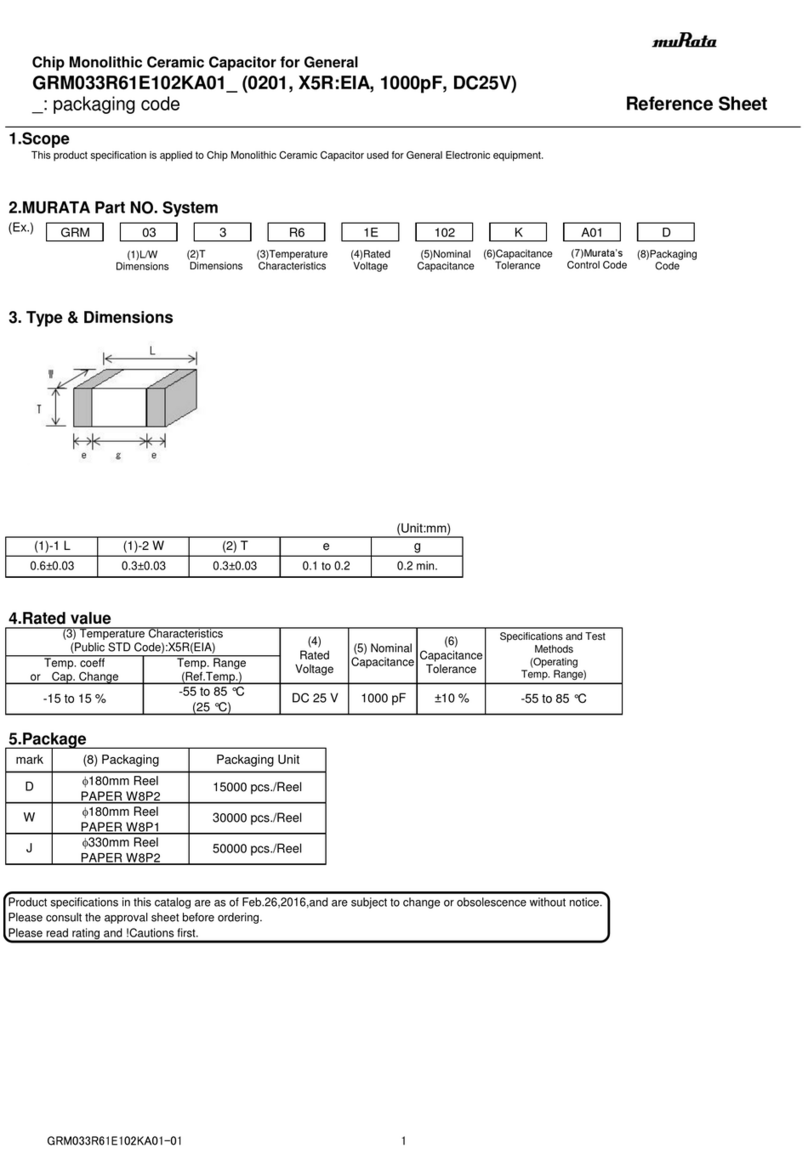
Murata
Murata GRM033R61E102KA01 Series Reference sheet
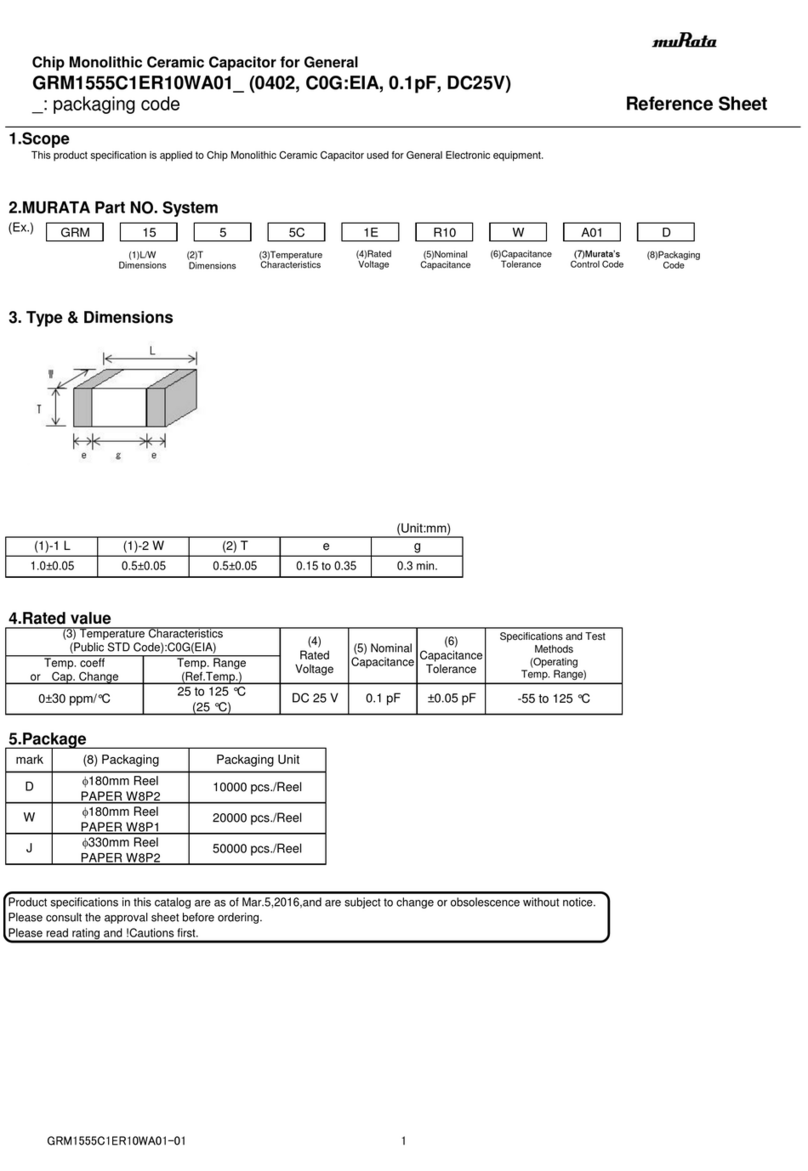
Murata
Murata GRM1555C1ER10WA01 Series Reference sheet
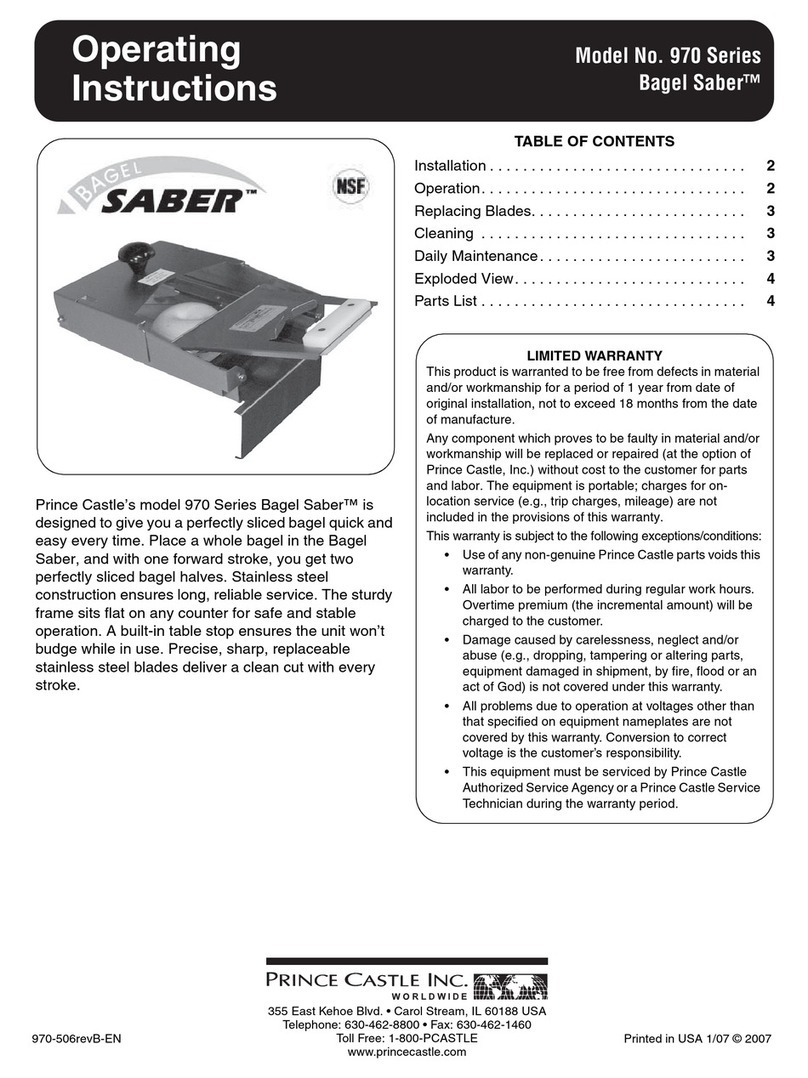
Prince Castle
Prince Castle Bagel Saber 970 Series operating instructions

SAN/BAR
SAN/BAR 319A quick start guide
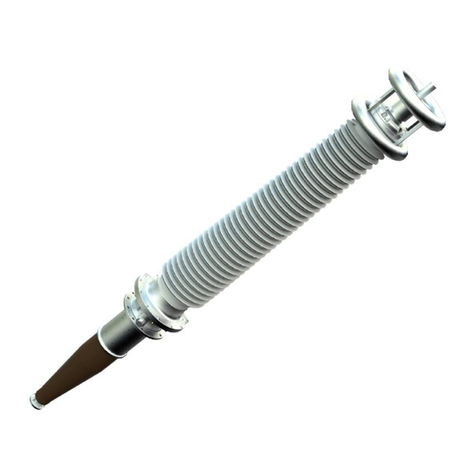
ABB
ABB GSC Series Installation and maintenance guide
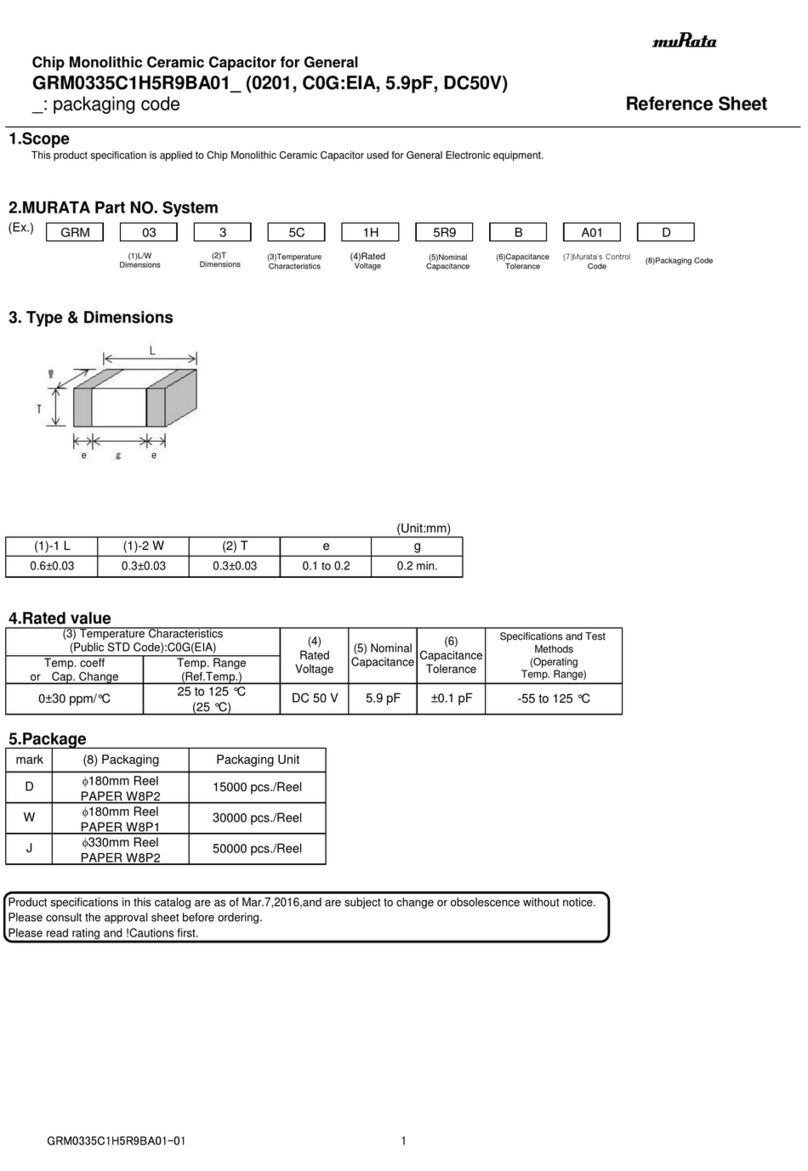
Murata
Murata GRM0335C1H5R9BA01 Series Reference sheet
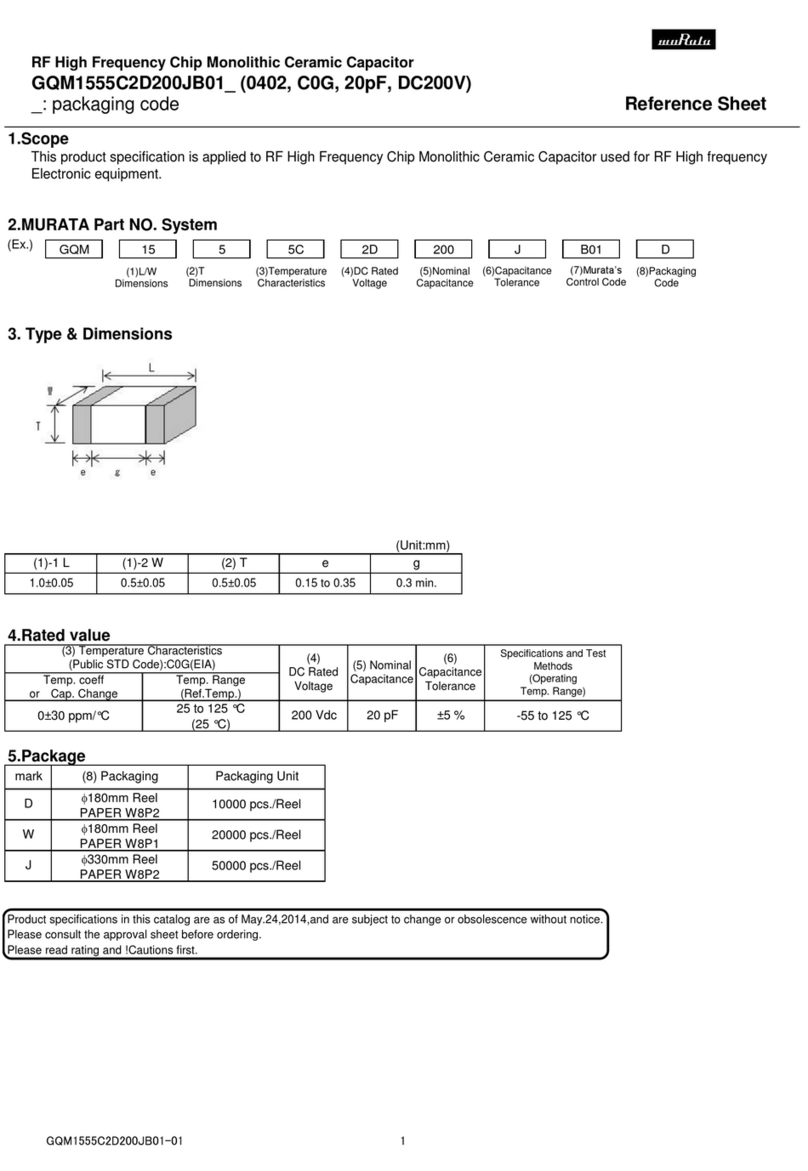
Murata
Murata GQM1555C2D200JB01 Series Reference sheet
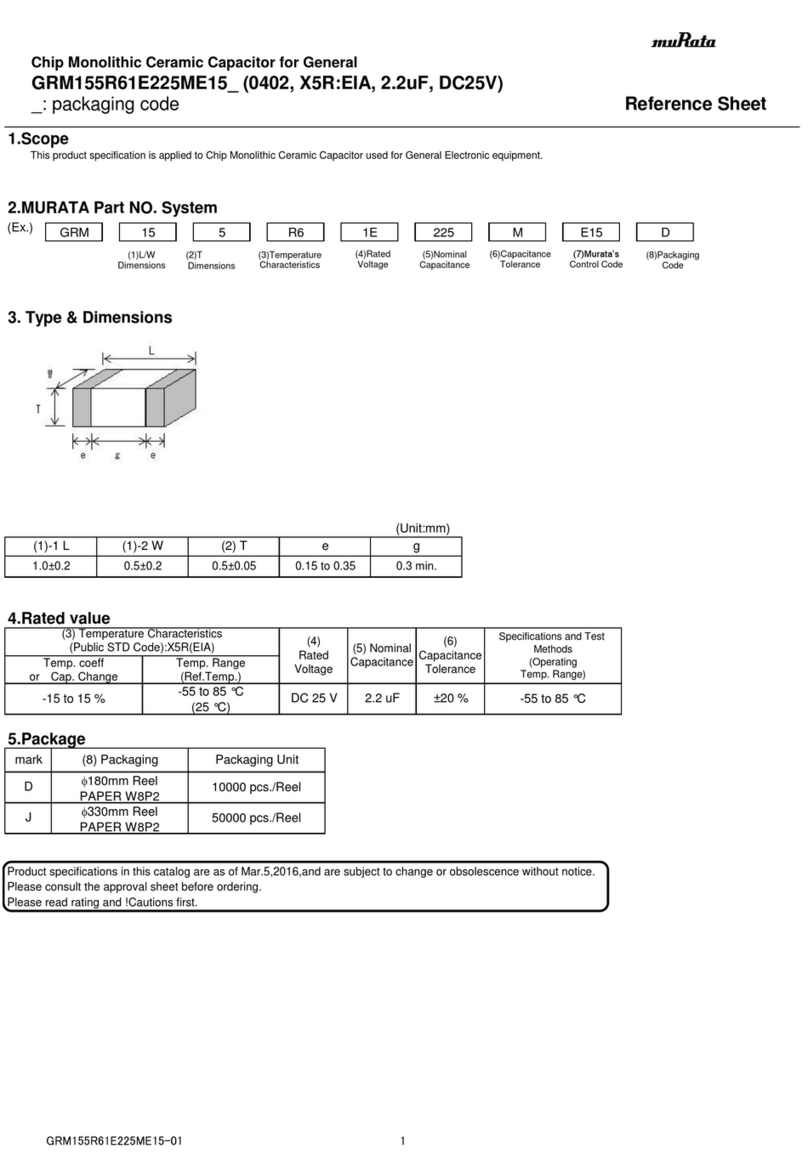
Murata
Murata GRM155R61E225ME15 Series Reference sheet

Murata
Murata GRM033R71H271KA12 Series Reference sheet

EPS
EPS ELR 9000 Series operating manual
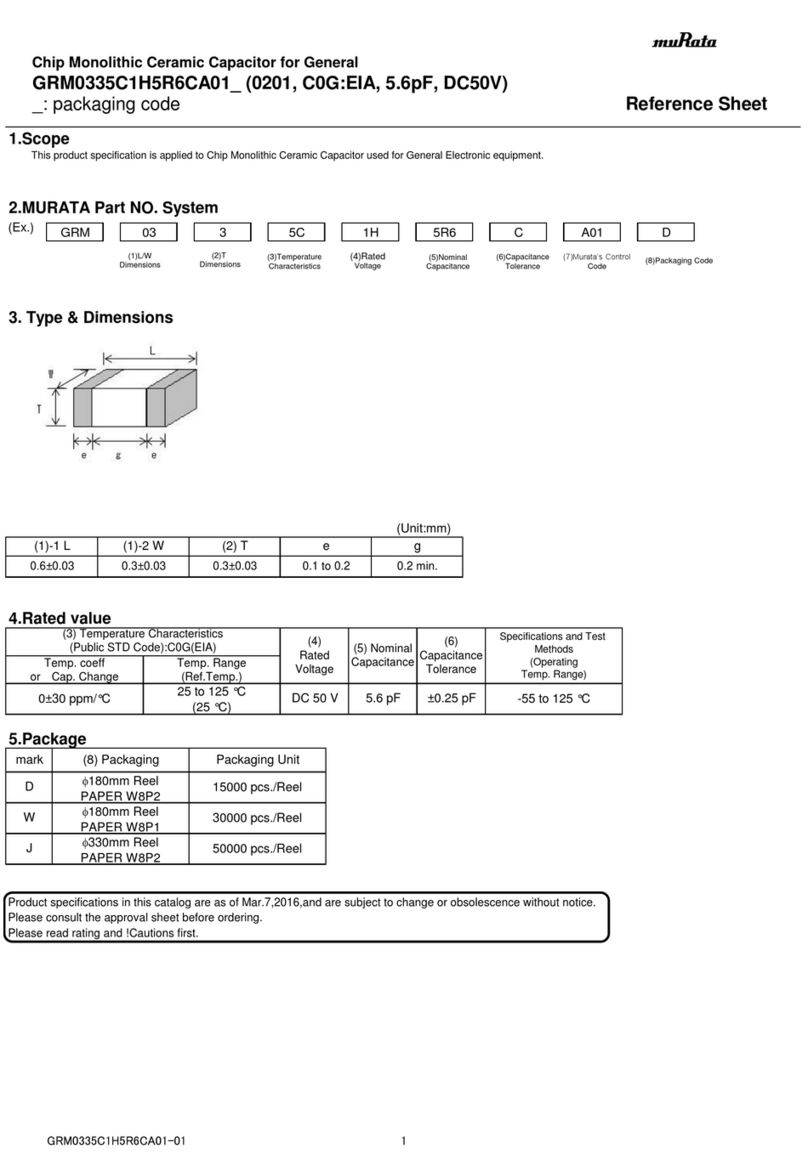
Murata
Murata GRM0335C1H5R6CA01 Series Reference sheet

Murata
Murata GRM0335C1H6R8CA01 Series Reference sheet

